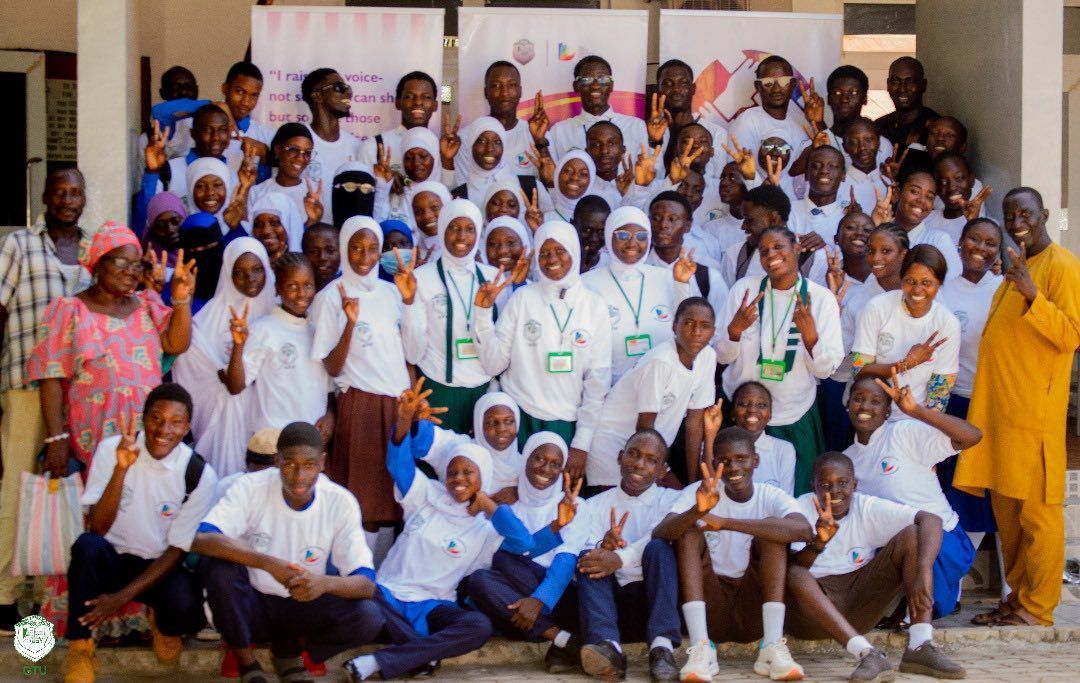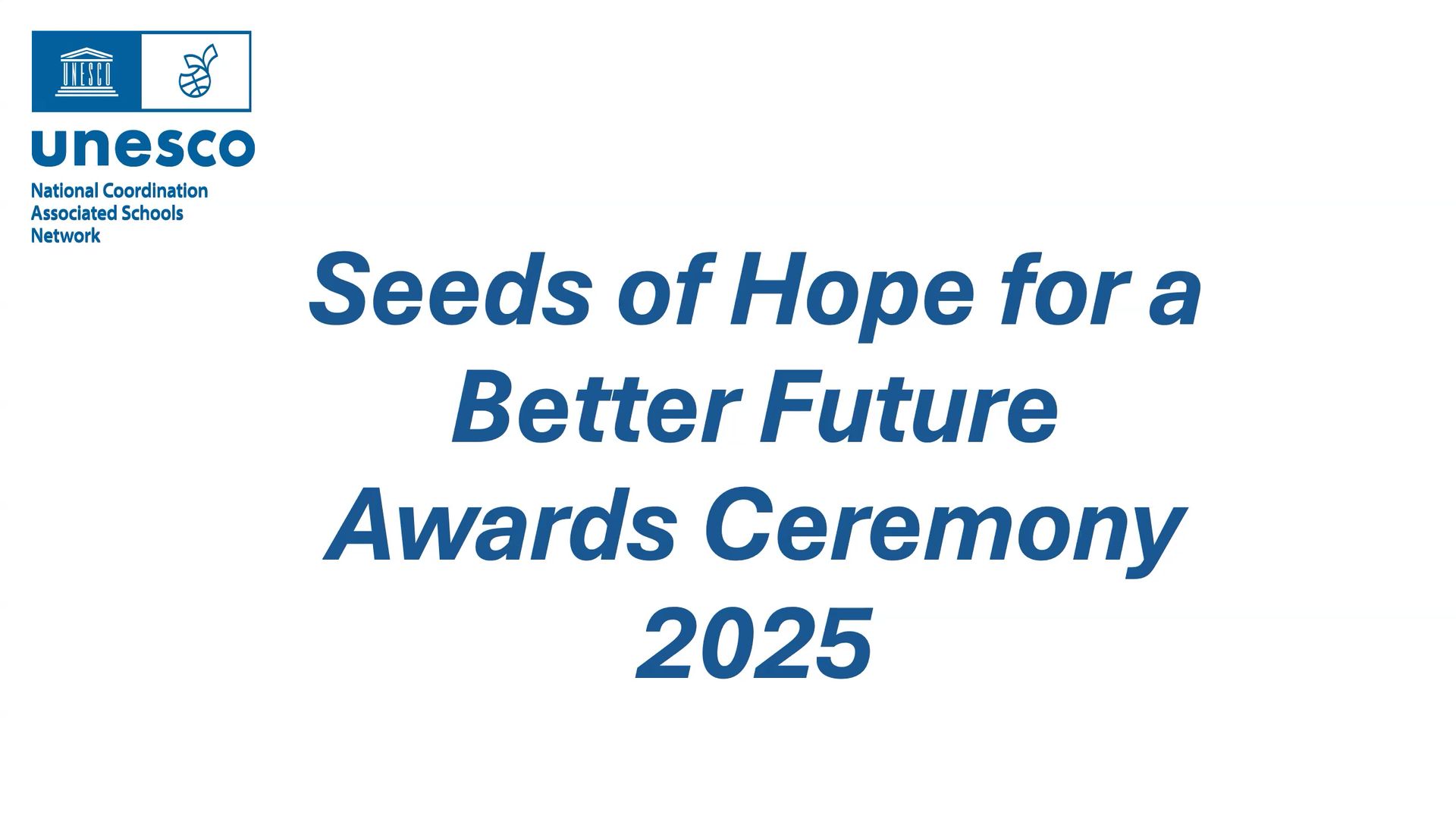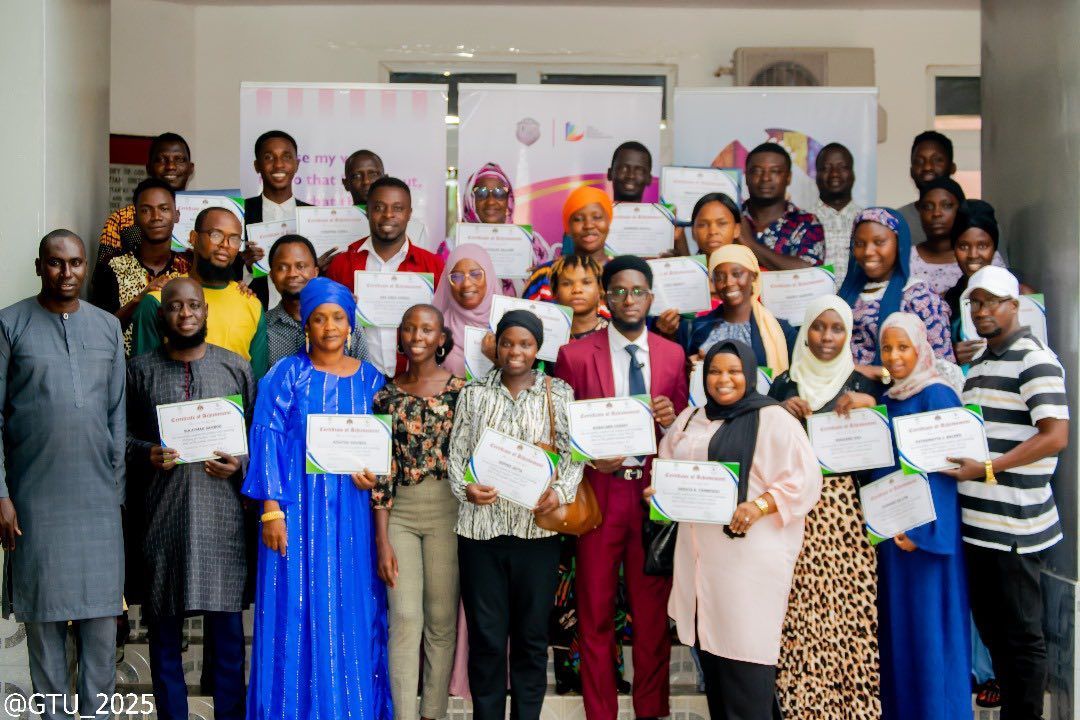Human Rights Day 2020 - Children’s Rights Are Human Rights
Human Rights Day is celebrated each year on 10 December, the date on which the Universal Declaration of Human Rights was adopted in 1948. On this day the NEU reaffirms its commitment to fighting for human rights around the world – which are still denied to far too many.
To mark Human Rights Day this year, we were pleased to be invited by the National Education Union (NEU) for an International Webinar to talk about how the Foundation (SSF) is advancing human rights and the Sustainable Development Goals. The SSF works with teachers and educators to deliver projects that ensure inclusive and equitable quality education for all.
Thank you to everyone who attended.It was a truly international event to mark Human Rights Day with teachers attending from The Gambia, Sierra Leone, Kenya, Malawi, the U.K, Northern Ireland and Ireland, resulting in some great ideas to progress Education For All.
The evening started with Jerry Glazier Chair and founding member of the SSF and NEU National Executive member, introduced the history of the Foundation and talked about the work of Steve Sinnott, in which his legacy lives on in the work of the Foundation.
Isata M Kamara talked about our ‘Positive Periods’ campaign which has reached over 60,000 girls in some of the world’s poorest countries, and Marie Antoinette Corr General Secretary of the Gambia Teachers Union (GTU) talked about GTU and SSF working in partnership on rural education.
Ann Beatty Chief Executive of the Steve Sinnott Foundation, explained how the Foundation and their partners have adapted this year to support safe learning during the pandemic and how everyone can do something to support Education for All children everywhere.
Some of the highlights of 2020:
• We have kept over 5,000 children learning in The Gambia through the provision of solar radios.
• Work is nearly complete on our 3rd Learning Resource Centre which is opening in The Gambia in the New year.
• We have sharing learning through online storytelling and setting up the Lifelong Learning webinar series. The partners and teachers we work with are doing amazing work across the globe, and we have been trialling ways to share some of this learning so it’s available to an ever-widening audience. The webinars are carefully selected to support teaching and learning and they may also support building business skills, creativity and wellbeing.
• Our Positive Periods project has had a positive effect on over 60,000 women and girls and we hope it will reach more girls. We are excited to tell you that in Havana they are starting another Positive Periods project with grandmothers teaching their daughters and granddaughters so they get to spend quality family time together too. The Positive Periods project is working in The Gambia, Sierra Leone, Uganda, Malawi and Cuba and we have more countries waiting.
One thing that the Pandemic has illustrated to everyone is how connected we all are to each other. We do not exist in bubbles, our groups are made up of people in other groups, who are connected to more groups and so on. We have seen not just the virus spread rapidly through a country but also across the world. We are all connected across the world.
It’s the same for education too. If we are able to get access to quality education right in one country, the problems caused by lack of education in other countries are still going to affect everyone globally.
Lack of education, and therefore opportunities, is something we are passionate about changing, we believe that Education is a human right for all children, it should not matter where they were born, who they were born to or their gender, they should expect access to a quality education as that gives them choices for their future.
The Steve Sinnott Foundation is working at a grass roots level to make a change to education across the globe. We do this by working in partnership with teachers on the ground, who scope and manage each project locally, so it is fit for purpose, respects the local culture and is sustainable and where possible replicable. We work with teachers to create independence not dependency.
When we have problems in the UK people may be concerned about how we can fix our own problems, but without fixing problems globally, new challenges will be created, which affect us all equally.
What can you do to support our work?
• You can help us with Resources and research.
• You can write articles for Engage or our blog so we can share all teaching and learning practices globally.
• We would love to work more closely with International Solidarity Officers so please invite us to work with you.
• You can follow us on social media, like and comment to get our engagement levels up.
• Subscribe to our YouTube Channel
• You can share our work with any new partners who might be interested, we believe working together is winning together.
• Finally, most importantly you can ask your districts to support our work, it costs £25 for a good quality solar radio which provides lessons for at least 10 children. So, £500 would buy 20 radios and support over 200 children to access learning.
• The materials and training for a making 5 reusable period pads which last a girl up to 3 years is £3 so if you donate £10 a month that is supporting 40 girls in a year. Once a girl has learned this skill, she can manage her periods independently and with dignity and pride.
If you have any questions or comments please leave them below or email ann.beatty@stevesinnottfoundation.org.uk
The Steve Sinnott Foundation • December 14, 2020

In our continued commitment to ensuring quality and inclusive education for every child, we’ve taken our advocacy to a new level by empowering the next generation to lead the conversation. In partnership with The Gambia Teachers Union, we recently convened the Foundation’s Young Ambassadors for a vibrant day of engagement dedicated to promoting the right to education for all. The event brought together passionate students from selected senior secondary schools across Region One, including St. John’s School for the Deaf, to explore what it truly means to make education inclusive, equitable, and accessible to every learner.

The Steve Sinnott Foundation is proud to celebrate the inspirational winners of the 2025 Seeds of Hope for a Better Future competition, a global initiative supported by UNESCO that brings together creativity, community, and a shared commitment to peace and sustainability. This unique project invited schools across the world from nursery and primary through to secondary and high school to explore the values of peace, cultural understanding, and care for the planet. In the face of climate change, young people were asked to tell their stories through art, performance, and digital creativity, highlighting how small seeds of action can grow into powerful movements for hope. The results have been extraordinary. Schools in France, the UK, Gambia, Haiti, and Kenya have been recognised for their outstanding contributions, with projects ranging from community gardens and sculptures to dance performances and illustrated stories. Each winner has shown how young voices and imagination can nurture peace and sustainability in ways that inspire us all. The full Awards Ceremony can be watched linked here: S eeds of Hope For A Better Future Awards Ceremony 2025 Highlights from the Winners Oak View Primary and Nursery School (UK) created Faces of Feeling, a collection of joyful sculptures already exhibited in a local gallery. Judges praised their work as supporting the wellbeing of others and embodying the idea of children as true “Seeds of Hope.” St Joseph’s Senior Secondary School (Gambia) painted Campaign for a Sustainable Banjul , reflecting real-world climate action in their city. The judges described it as “a most deserving and robust winner.” In France , the Jardin d'Enfants des Nations Unies (United Nations Nursery School) won hearts with Wind of Peace , where 5-6 year olds combined drawings, paintings, and tree planting to champion reforestation. Lyng Hall Secondary School, Coventry (UK) collaborated with Henley Green Primary and the UK Literacy Association to produce The Heart Shaped Hole – an innovative and metaphorical take on Seeds of Hope. Earlsdon Primary School, Coventry (UK) impressed with Primary Plot , a project that included gardening with the visually impaired, reflecting inclusivity and sustainability. A remarkable cross-collaboration between 21 schools across West Yorkshire, Essex, and Tower Hamlets (UK) resulted in Lights, Camera, Score , an ambitious combination of animation, music, and storytelling. CIMA Community School of Hope, Haiti shared Konbit - a video of dance and solidarity, inspiring villages to work together for peace and dignity. Daraja Academy, Kenya presented an ambitious and optimistic project integrating sustainability into everyday school life. Celebrating Creativity and Peace This year’s competition was judged by an impressive panel of artists, writers, and cultural leaders including Sir Antony Gormley, Edmund de Waal, Dame Liz Forgan, Hugh Quarshie, and Rathna Ramanathan. Their collective expertise highlighted the quality and depth of the entries, each of which showed how art can be a powerful tool for global understanding and change. The Seeds of Hope initiative is part of UNESCO UK’s Arts and Culture for Peace programme, first launched in 2022. It has grown from earlier collaborations such as the Coventry Young Ambassadors’ Islands of Peace Japanese Garden , opened in 2021 a living reminder that seeds planted in communities can continue to flourish. Highlights from the ceremony can be found here at this playlist Looking Ahead As Ann Beatty, UNESCO ASPnet UK National Coordinator , shared: “The quality of entries was extraordinary. We are delighted at the response to this amazing initiative in collaboration with our international partners.” And in the words of judge Jannette Cheong : “Young people around the world understand well the value of peace and tolerant relationships between cultures. Their creativity is an inspiration to all of us.” At The Steve Sinnott Foundation, we believe that education is the seed from which hope grows. The Seeds of Hope competition is a shining example of how young people through creativity, compassion, and collaboration are already shaping a more peaceful and sustainable future. You can access the full online awards presentation here: Seeds of Hope For A Better Future Awards Ceremony 2025

The journey to strengthen the well-being and success of learners in The Gambia continues with a renewed commitment to guidance and counselling in schools. By August 14th 2025, we have successfully trained 140 educators across 𝐑𝐞𝐠𝐢𝐨𝐧𝐬 𝟏, 𝟐, 𝟑 & 𝟒 under our Guidance & Counselling Programme. A programme designed to equip educators with the skills to support students’ academic, social, and emotional development. Region 3 Teachers Complete Level 2 Training On Wednesday, 6th August, thirty teachers from Region 3 (North Bank Region) began a three-day Level 2 Guidance and Counselling training at the Christian Council in Kanifing. This programme built on their earlier Level 1 training in Farafenni, with a focus on deepening their capacity to serve as school-based counsellors. The training concluded with a certificate presentation ceremony, recognising the teachers’ commitment and marking an important step in their professional development. These certificates symbolize more than an achievement; they represent each teacher’s readiness to provide psychosocial support, guidance, and mentorship to learners across their schools.

